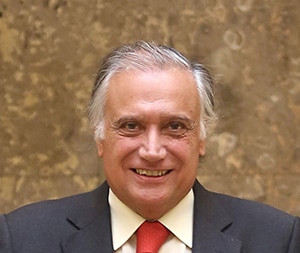Portugalavoided austerity in its path to recovery but now faces adaunting debt load.

Palmela, Portugal: SAS Automotive plant, assembling cockpits for Volkswagen |
Portugal’s economy expanded by 2.7% last year—marking its highest growth rate since 2000—as manufacturing, tourism and internal demand powered ahead to close the period of adjustment overseen by the European Union and the International Monetary Fund.
That figure may by the nation’s high-water mark for a long time, however. Despite a strong level of consumption, a jobless rate that’s fallen by half and expanding foreign direct investment, economic expansion is slowing this year. While the past three years have seen Portugal emerge from the financial crisis and the recession that followed, it remains saddled with a high level of debt, both public and private, as well as a relatively old population and low productivity growth.
“Growth rates as in 2017 are not possible for Portugal in the long run,” says Steven Trypsteen, economist at ING. “The strong growth in 2017 was not structural but cyclical. The potential growth rate for Portugal is estimated to be close to 1.5%.” Trypsteen expects 2018 growth of 2.1%, in line with other economists. Spain, which has a much lower level of public debt, is expected to outperform Portugal this year.
The minority Socialist government, led by Prime Minister António Costa with the backing of the Communists, along with the radical left Bloc and the Greens, opposed the austerity measures that would have been needed to quickly reduce public debt, opting instead to put the economy back on track through increased state investment. That has been a good recipe for obtaining short-term results and defying the populism spreading in the rest of Europe. But from the perspective of many economists, delaying a multitude of reforms and sustaining high levels of debt will be a drag on the country’s long-term economic outlook.

Trypsteen, ING: The strong growth in 2017 was not structural, but cyclical. |
Last year’s robust growth had its roots in the three-year economic adjustment overseen by the EU and the IMF. After 15 consecutive quarters of expansion, the mood is positive, if not bullish.
“The growth we expect for 2018 is 2.3%, and 2.1% for 2019,” says Paula Gonçalves Carvalho, chief economist at Banco BPI. “But independently from the figures, we expect that growth is going to keep strong, probably a little bit higher than 2%, which is very good.” The country’s industrial profile also appears more robust, she adds. “There is diversification in terms of the goods that Portugal exports, including traditional goods that have been doing very well, such as textiles, footwear and cork products. This diversification gives a lot of resilience to the Portuguese economy.”
Portugal’s unemployment rate fell below 8% in the second quarter of 2018, less than half its peak of almost 18% in 2013 and below the euro area average. Exports exceeded 47% of GDP, up from 29% in 2009. And tourism is booming, helped by the fact that Portugal was spared the terror attacks that other European and Mediterranean countries suffered. Total foreign tourist visits rose by 12% to 12.7 million; with domestic tourists factored in, the total rose to some 21 million.
Tourism, in fact, is now one of the country’s key engines of growth. Some estimates have the industry contributing more than 20% of total GDP this year, surpassing other major components such as car production, textiles and construction.
Debt Is a Drag
The main worry remains high public debt, which at 126% of GDP is the euro area’s third largest. Expected to decline to 108% of GDP by 2023, the public debt still leaves Portugal vulnerable to macroeconomic forces such as the winddown of monetary stimulus or unexpected market turbulence.
“The Portuguese economy is still constrained by high levels of debt—public and private, domestic and external—which is a source of vulnerability to negative external shocks,” says Carlos Andrade, chief economist at Novo Banco. “This is particularly true for corporate debt and public debt,” he adds, while noting that both have been declining as a percentage of GDP.
When European bond and stock markets fell sharply at the end of May ahead of the installation of the new populist, anti-EU Italian government, the spread differential between the yield on Portuguese and German bonds rose in sympathy with those of their Italian counterparts. The sudden fall of the Spanish government added to instability fears—a reminder that the trust the Portuguese gained with years of austerity can still easily be wiped out, should Southern Europe face new disruptions. “Being a small, open economy means that Portugal is dependent on the European business cycle, and recent developments in Italy and Spain have led to an increase in uncertainty, adding to the potential for trade wars, which may lead to a more moderate expansion of exports,” says Antonio Monteiro, CEO of Banco Santander Totta.
If interest rates were to rise sharply, Portugal will find itself paying a large amount to finance its debt, putting pressure on public finances and lowering growth,” says Angel Talavera, lead eurozone economist at Oxford Economics.
Finance Sector Health
A big issue is the financial health of domestic banks. The sale last October of Novo Banco—the entity created in 2014 out of the healthy assets of Banco Espírito Santo, which was split into good and bad banks after its collapse—was a landmark moment in the recovery of the Portuguese banking sector. US equity fund Lone Star acquired 70% of Banco Novo. But more work is needed to improve the balance sheets of Portuguese banks. The sector “is still dealing with a high level of nonperforming loans [NPLs], even if the reduction in the stock has been significant in the last couple of years—and is expected to continue to decline at a rapid pace,” says Andrade.
The challenge will continue in coming quarters, says Monteiro at Santander Totta: “The fact that some banks with high NPL exposure have returned to profitability means they could continue to address this issue.”

Monteiro, Banco Santander Totta: The quality of the labor force and the relationship between companies and universities have been key in attracting the latest wave of investment. |
Bank reforms are only one item on the economic reform checklist. “Reforms in the banking sector to deal with the high percentage of NPLs, and in the labor market to reduce labor market duality [extreme divergence of working conditions between skilled and unskilled], are two classic examples,” says Trypsteen at ING. “Product market reform, however, could also provide benefits. It could increase competition that in turn increases productivity.”
The country’s economic future also depends on a continued vote of confidence from international investors. Foreign direct investments rebounded only modestly in 2017, and the government is keen on attracting participation not only from Europe but also from the US and China. Most measures suggest it has a good chance. Gone are the days when Portugal’s debt was marked below investment grade by three out of four rating agencies and only the positive judgment of Canadian rating agency Dominion Bond Rating Service (DBRS) left it eligible for the European Central Bank’s bond-purchase program.
Standard & Poor’s was the first to change its stance, in September 2017, raising the country’s rating to BBB- from BB+. It was followed by Fitch Ratings, which bumped Portugal’s rating up two levels in December. Moody’s still rates Portugal as noninvestment grade but shifted its outlook to positive from stable last year on its B1- rating.
One of the main worries is the government’s budget deficit. Although it remains well below the 3% set by the Maastricht levels, overall spending remains high. Portuguese pension spending, as a percentage of GDP, is still the fourth highest in Europe, following Greece, Italy and France.
Here, too, progress appears possible: “Portugal’s sovereign rating would be upgraded to investment grade should Moody’s conclude that the positive economic and fiscal trends are likely to be sustained and the rating agency is confident that the very high debt burden will move to a steady, downward trend,” the US ratings agency says.



